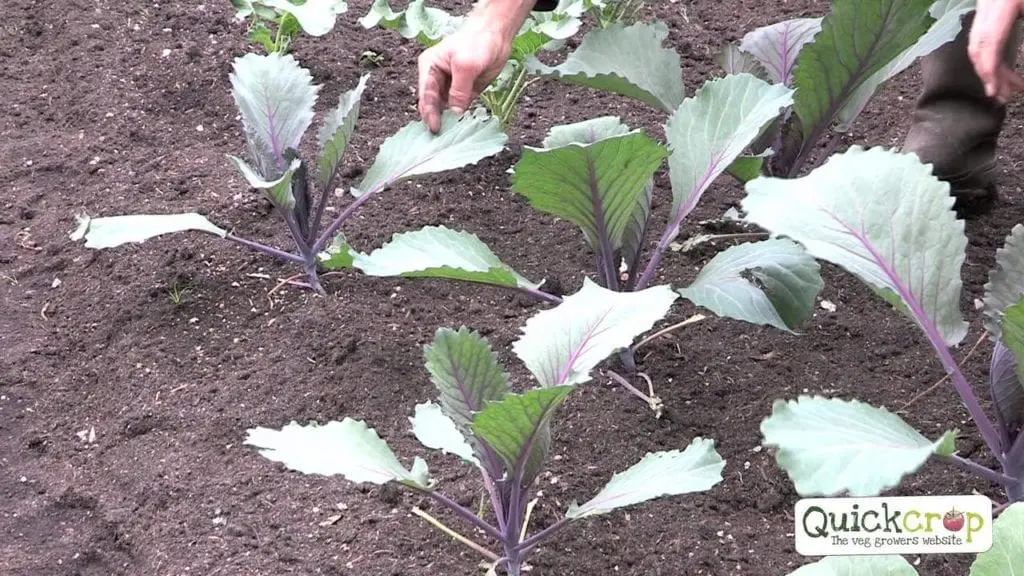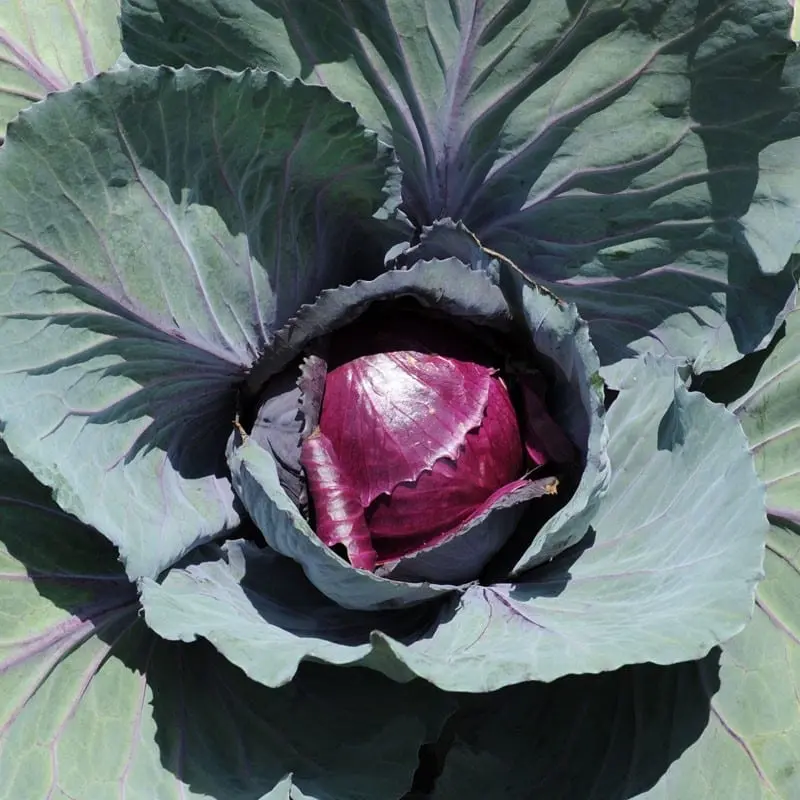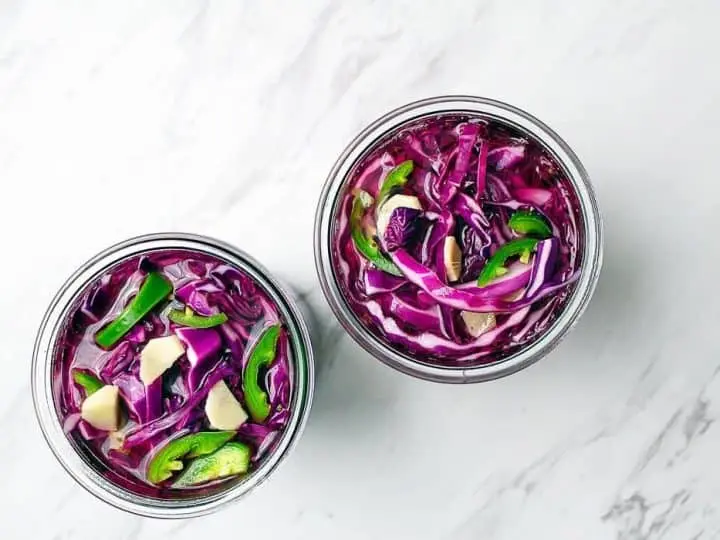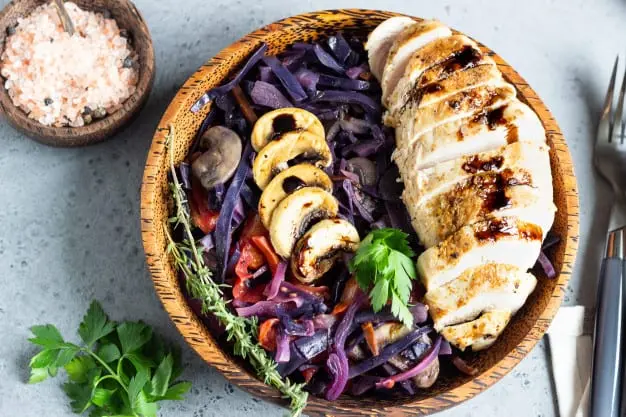Contents
Purple cabbage contains many antioxidants and other beneficial substances for the body.
The biennial plant is a breeding variety of white cabbage. Red cabbage or purple, as it is popularly called, cabbage contains more vitamins and is better stored than “white”. Such cabbage is consumed in late autumn, as well as in the winter-spring period – there is no need to salt it.
Cabbage color can be from maroon to deep purple and bluish green, depending on the acidity of the soil.
Purple cabbage: benefits and harms
Purple cabbage, compared to white cabbage, contains more vitamin C and vitamin K – 44% and 72% of the daily value. Carotene in such cabbage is 5 times more, also much more potassium.
Due to the high content of anthocyanins – pigments of red, blue and purple colors – with regular use of purple cabbage, the fragility of blood vessels decreases.
Red cabbage is recommended for the prevention of tumor diseases and the treatment of stomach ulcers.

Cabbage has a good effect on metabolism, helping to lose weight. The vegetable is useful for diseases such as gout, cholelithiasis, atherosclerosis.
Purple cabbage contains many antioxidants that stimulate the process of cell regeneration in the body.
Cabbage is not recommended for use with a tendency to spasms of the intestines and bile ducts, acute enterocolitis and increased intestinal peristalsis.
The calorie content of red cabbage is only 26 kcal.
The use of this product does not cause obesity. Nutritional value per 100 grams:
- Protein, 0.8 g
- Fat, 0.2 g
- Carbohydrates, 5.1 g
- Ash, 0.8 g
- Water, 91 gr
- Caloric content, 26 kcal
Red cabbage contains proteins, fiber, enzymes, phytoncides, sugar, iron, potassium, magnesium; vitamin C, B1, B2, B5, B6, B9, PP, H, Provitamin A and carotene. Carotene contains 4 times more than in white cabbage. Anthocyanin contained in it has a positive effect on the human body, increases the elasticity of capillaries and normalizes their permeability. In addition, it prevents the effects of radiation on the human body and prevents leukemia.

The healing properties of red cabbage are also due to the content in it of a large amount of potassium, magnesium, iron, enzymes, and phytoncides. Compared to white cabbage, it is rather dry, but richer in nutrients and vitamins. Phytoncides contained in red cabbage prevent the development of tubercle bacillus. Even in ancient Rome, red cabbage juice was used to treat lung diseases, and it is still used to treat acute and chronic bronchitis today. Red cabbage is recommended to be included in the diet of people suffering from essential hypertension, as it helps to lower blood pressure. Its medicinal properties are also used for the prevention of vascular diseases. It is useful to eat it before a feast in order to postpone the effect of excessively drunk wine. It promotes wound healing and is beneficial for jaundice – bile spills.
The essence from it is a universal remedy. Red cabbage is not as widespread as white cabbage, because it is not as versatile in use. It is not so actively grown in garden plots due to the peculiarities of its biochemical composition and the specifics of its use in cooking. All the same anthocyanin, which is responsible for the color of this cabbage, gives it a pungency that is not to everyone’s taste.
Red cabbage juice is used in the same cases as white cabbage juice. Therefore, you can completely safely use recipes intended for white cabbage juice. It should only be noted that in the juice of red cabbage, due to the large amount of bioflavonoids, the properties of reducing vascular permeability are more pronounced. Therefore, it is indicated for increased capillary fragility and bleeding.
What can you make with purple cabbage?
Purple cabbage is used in salads and side dishes, added to soups and baked. This cabbage may turn blue when cooked.
To preserve the original color of the cabbage, add vinegar or sour fruits to the dish.
Red cabbage salad

Red cabbage contains much more vitamin C and carotene than white cabbage. There are many other useful substances in it. Therefore, red cabbage salad is so useful, and the addition of sweet peppers, onions and wine vinegar will help make it tasty and savory.
Food (for 4 servings)
- Red cabbage – 0.5 head of cabbage
- Vegetable oil – 2 tbsp. spoons
- Onions – 2 heads
- Sweet pepper – 1 pod
- Wine vinegar – 2 tbsp. spoons (to taste)
- Sugar – 1 tbsp. spoon (to taste)
- Salt – 0.5 tsp (to taste)
Pickled red cabbage

When these beautiful heads of dark purple color appear in grocery stores and on the market, many ask: “What should be done with them?” Well, for example, this is what.
Food (15 servings)
- Red cabbage – 3 heads of cabbage
- Salt – 1-2 tbsp. spoons (to taste)
- Red pepper – 0.5 tsp (to taste)
- Black pepper – 0.5 tsp (to taste)
- Garlic – 3-4 heads
- Marinade for red cabbage – 1 l (how much it will take)
- Marinade:
- Vinegar 6% – 0.5 l
- Boiled water (chilled) – 1.5 l
- Sugar – 2-3 tbsp. spoons
- Cloves – 3 sticks
Braised red cabbage with chicken fillet

Delicious and juicy red cabbage with chicken fillet is a variant of a popular Czech dish.
Food (for 2 servings)
- Red cabbage – 400 g
- Chicken fillet – 100 g
- Bulb onions – 1 pc.
- Garlic – 1 clove
- Cumin – 1 tsp.
- Sugar – 1 tsp
- Wine vinegar – 1 tbsp. l.
- Balsamic vinegar – 2 tbsp. l.
- Salt to taste
- Ground black pepper – to taste
- Vegetable oil for frying – 2 tbsp. l.









